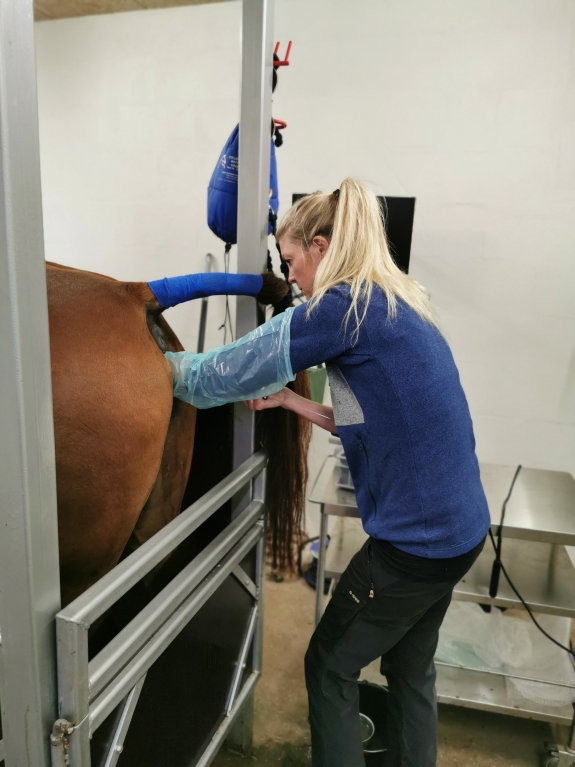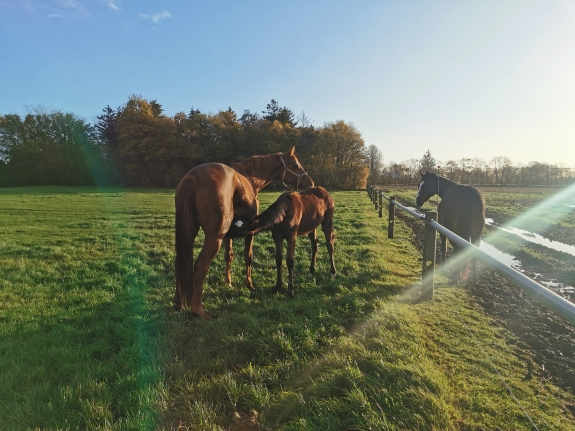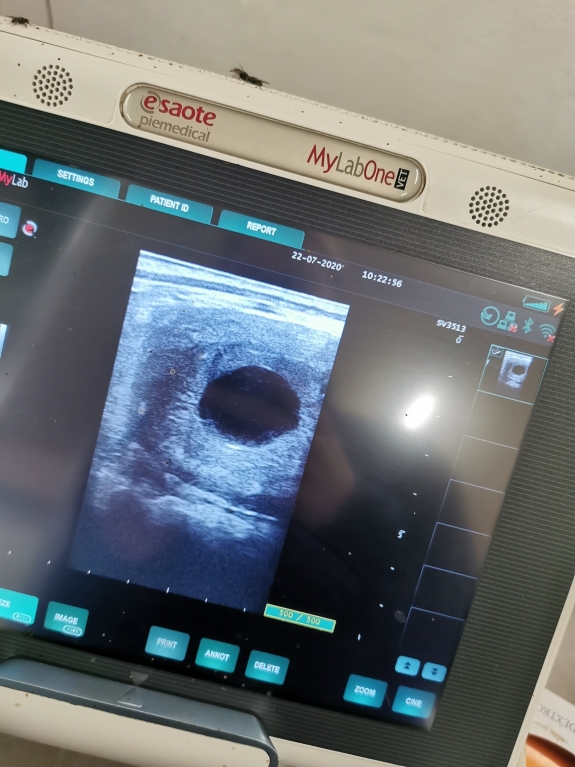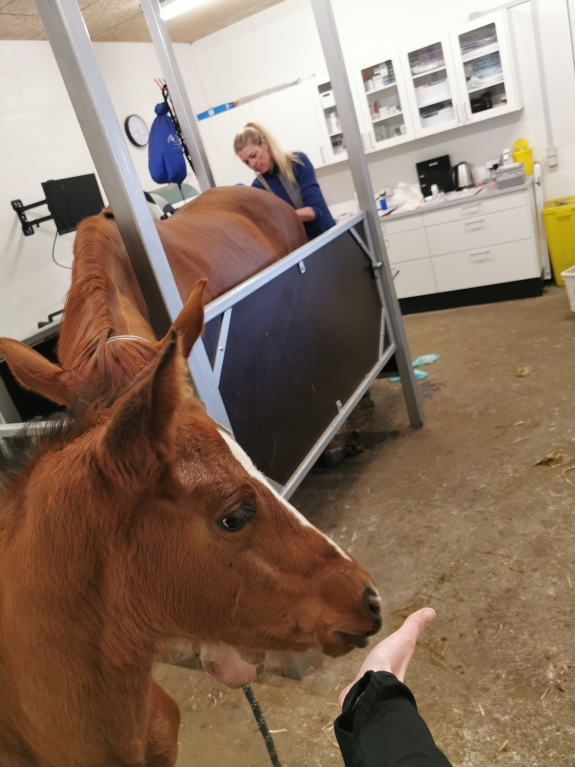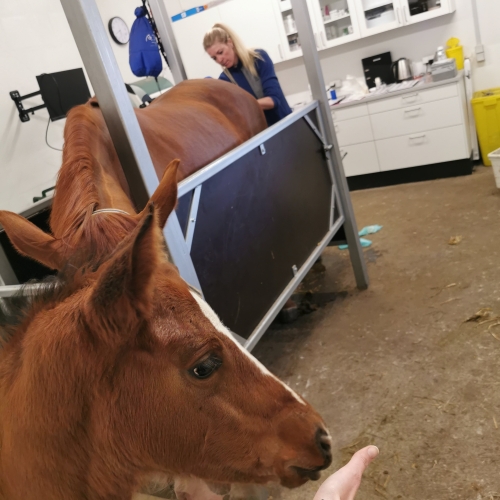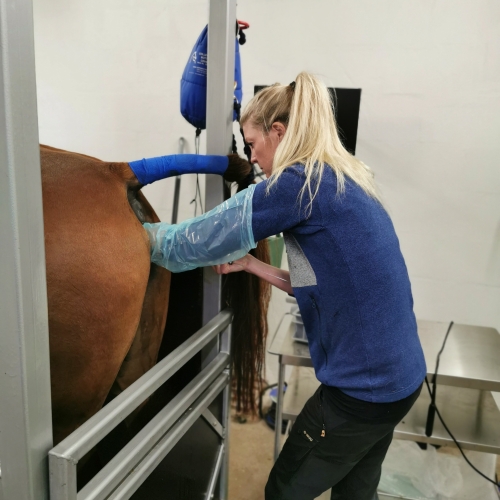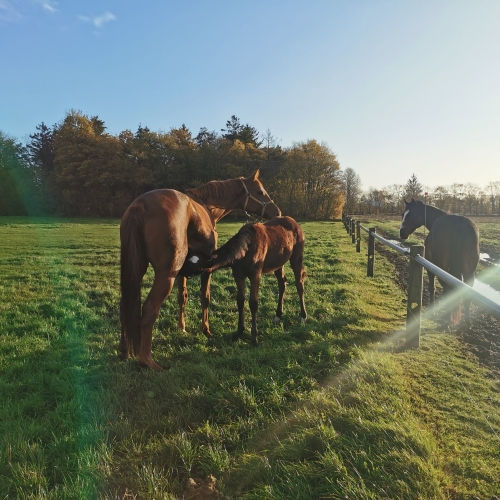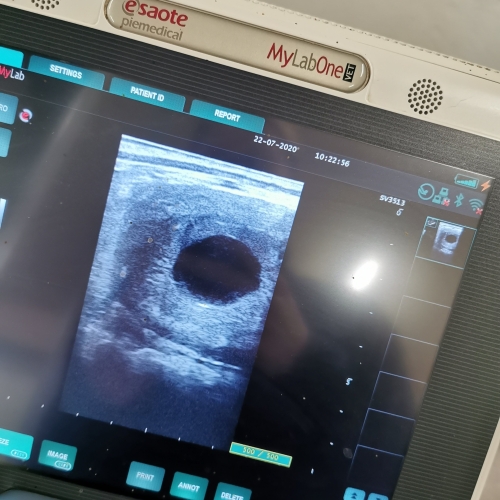If you make foals by OPU / ICSI, or by embryo flushing, you need a recipient to carry the pregnancy. Depending on the breed of your horse, there are different requirements for the recipient.
For Icelandic horses, it is only legal to use a purebred Icelandic horse as a recipient. For warmbloods, no special requirements apply.
We offer various options for transferring your embryo:
- Transfer at our location
- The recipient mare comes here and is prepared.
- The recipient mare is prepared at home and arrives on the day of transfer.
- Transfer at your home
- The recipient is prepared at home by your own veterinarian.
- A stock is available.
- There is a clean, heated room with a table and a chair available where the embryo. can be prepared for transfer.
- Be aware that this solution comes with a travel fee.
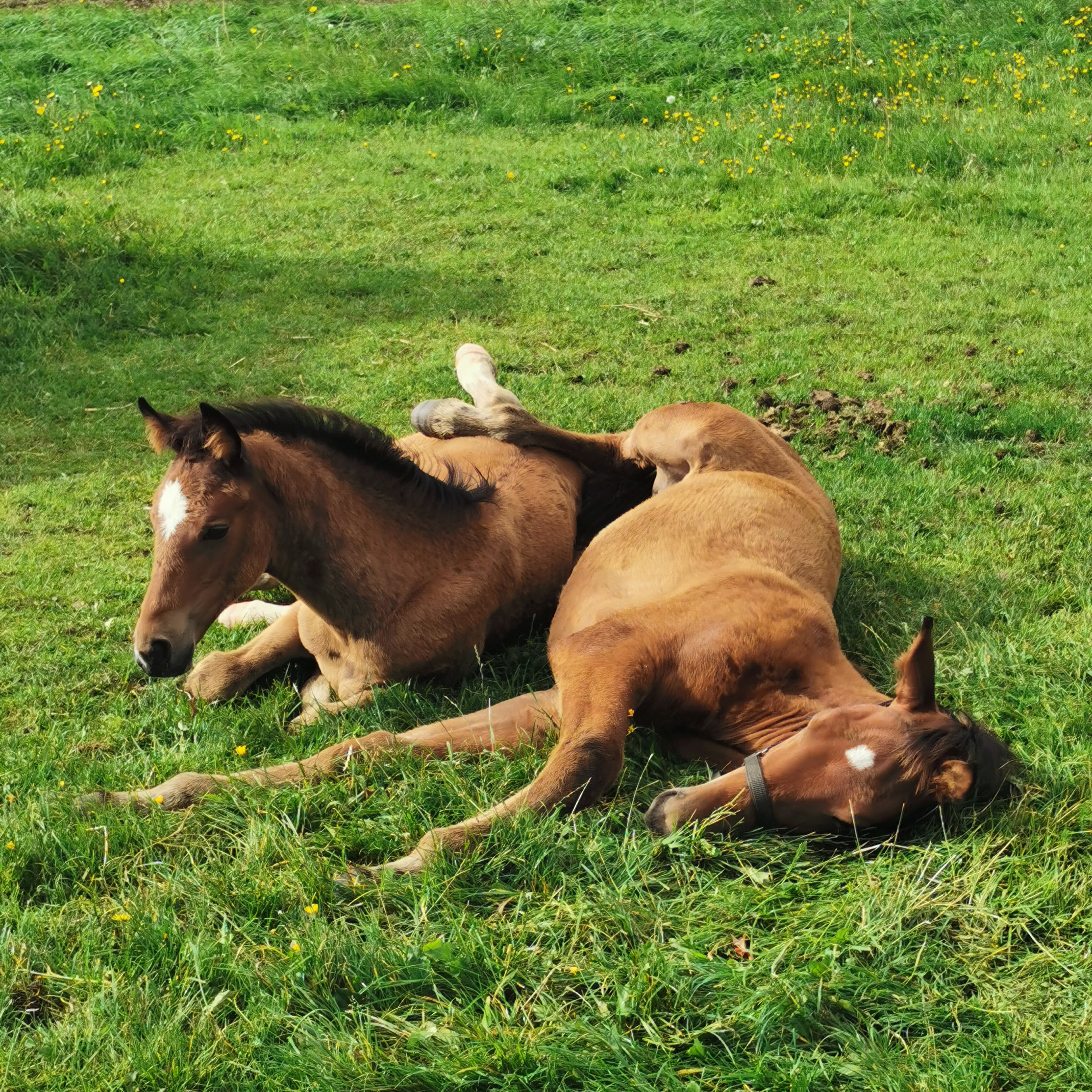
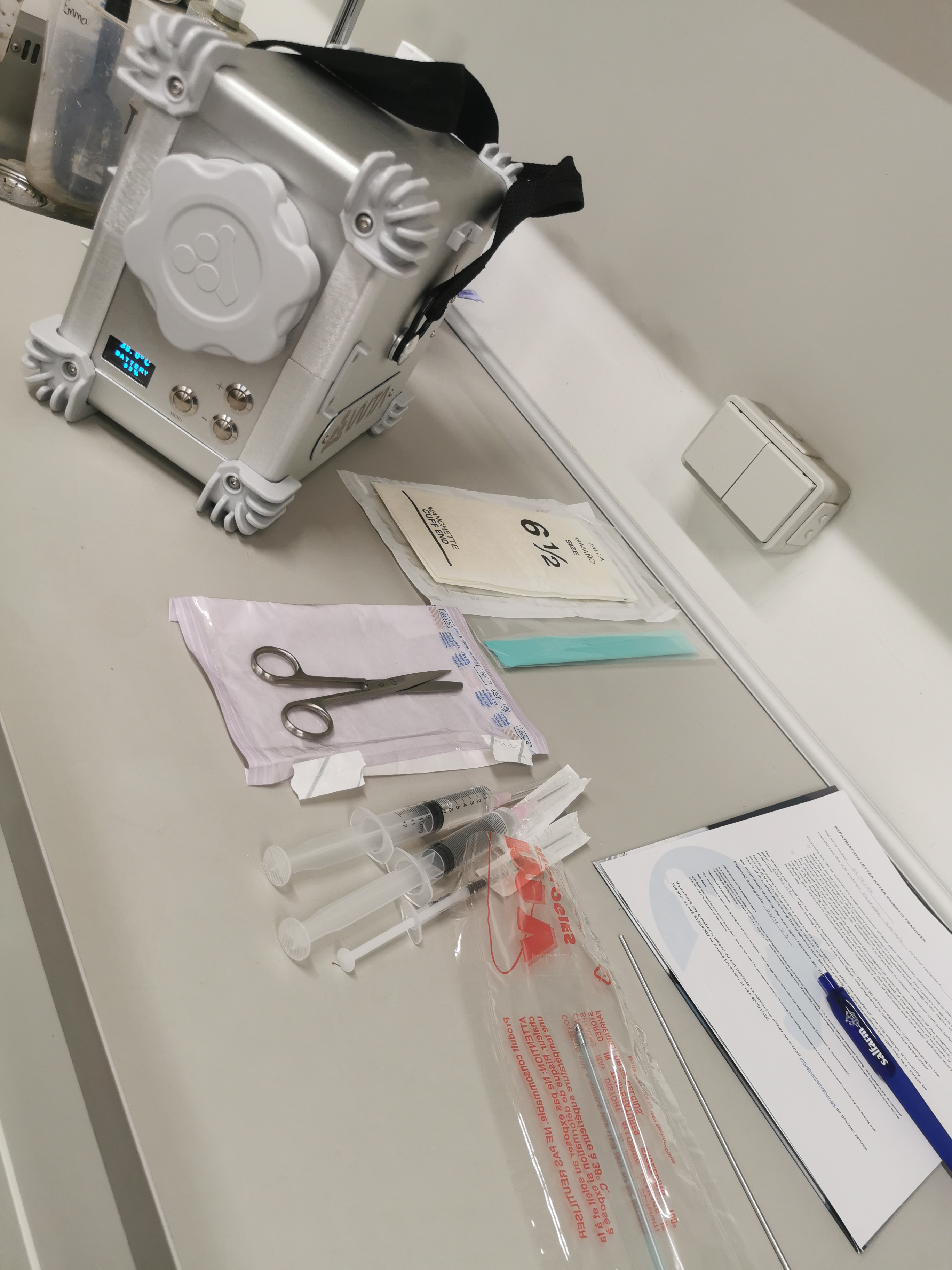
The transfer itself
The embryo must be transferred four days after the recipient has ovulated. It is therefore of great importance that the recipient is followed closely with daily scans to assess the follicles until ovulation. Studies have shown that the pregnancy rate is the highest at exactly that time. We scan the mare right before the transfer to evaluate the uterus and the corpus luteum. The corpus luteum produces the hormone progesterone, which is an important hormone for maintaining pregnancy. If there is any doubt about the quality of the corpus luteum, we take a blood sample and measure the progesterone concentration in the blood. This test can be run ‘in-house’ at VetEmbryo, and the answer is available 15 minutes later.
At the actual transfer, the recipient is sedated to keep the mare calm during the transfer. We prefer the mare to be sedated as even the calmest horse can be startled. Sudden movements of the mare can result in too much manipulation of the cervix, and as a consequence, the pregnancy rate drops.
The rectum is emptied and the mare is washed thoroughly before transfer. It is fundamental that you focus on all the details, especially when working with ICSI embryos.
The embryo is stored in liquid nitrogen. Before transfer, the embryo is thawed and placed in a special medium in an insemination straw. The straw enters a metal gun and is pushed out of the straw and placed in the uterus by pressing a stiletto at the bottom.
Requirements for a recipient
The recipients must be in a good health. They need to be cared for like any other horse, as they often carry offspring of a high value. They must not have a history of problems in relation to insemination (fluid etc.), during pregnancy or during the actual foaling. Young mares ages 3-8 years are preferable. Studies have shown that one of the most important factors for a recipient mare to establish a pregnancy is a good, long heat (preferably 4-6 days) before ovulation. After a good long heat, the hormone levels, and thus the environment in the uterus, are optimal for receiving an embryo.
It is not fundamental that your recipient has carried a foal before. We want to use the young mares, as the uterus is often completely untouched. We sometimes find that people are worried about whether a young mare will have an uncomplicated foaling, lactate well enough, or about her general behavior around the foal. Basically, we are not worried about this. It is only in extremely rare cases, and in fact most pronounced within particular breeds, that the mare rejects the foal. We experience that the young mares, down to the age of three, also work really well as recipients.
- Requirements:
- Age: 3-8 years
- No history of reproductive difficulties (fluid, infection etc.)
- Good condition
- No clear lameness
- Preferable:
- Size min. 160 cm
- Good temperament
- Can be bare footed
How do I find a recipient?
Since the embryo is frozen, you can wait to thaw it until the recipient is ready. This offers a great deal of flexibility, and you don’t have to compromise on the quality of the recipient.
Many clients find a recipient on their own, but if you don't have a recipient available, it is possible to rent a recipient from VetEmbryo or from our collaborator Højelse Hesteklinik.
Concerns about the size of the recipient
We experience that many clients are concerned about the size of the offspring, if the recipient is smaller than the donor mare. In one of the newer, larger studies within this field, twin embryos (two fertilized oocytes) from one donor were placed in recipients with up to 18 centimeters difference in the height. The study showed that there was a significant difference in the size of the twin foals at birth, and at year one, to a lesser extent at year two, but that at year three, no significant differences were observed. In other words, the size of the recipient has an effect on the size of the foal up to approximately 2-3 years of age. After this period, it is the genetics of the offspring that determine the size. You are safe to use a recipient that is smaller than the donor mare.
The two studies we refer to are:
Vazquez et al, JEVS, 66; 2018; 214
Cuervo-Arango et al, EVJ, 50; 2018; 386-390
How to prepare the recipient
The quality of the recipient mare is important for the ICSI embryo to develop and establish a pregnancy. In fact, it is only when the recipient is in heat that we can assess her quality as a recipient. If the mare has previously had a foal, or there are signs of fluid/inflammation in the uterus, we take a small sample from uterus. We do a ‘flushing test’, where a small amount of NaCl is poured into the uterus and then collected again. The fluid is centrifuged, and the cells are collected and grown on a blood agar plate. A sample from the uterus can also be performed with a regular swab. When the mare is in good heat, characterized by external heat, edema in the uterine lining, and a soft cervix, the mare is scanned daily. Preferably, she is scanned at the same time of the day, so that ovulation can be determined with approximately one-day precision. Close to ovulation, the edema in the uterus decreases and the dominant follicle begins to change shape. After ovulation, the corpus luteum is formed.
If there is the slightest risk that air can enter the vaginal opening due to poor conformation, we do what is called a Caslick surgery. It is a small procedure where the upper part of the vulva is sewed together to avoid air and dirt/bacteria entering the vagina.
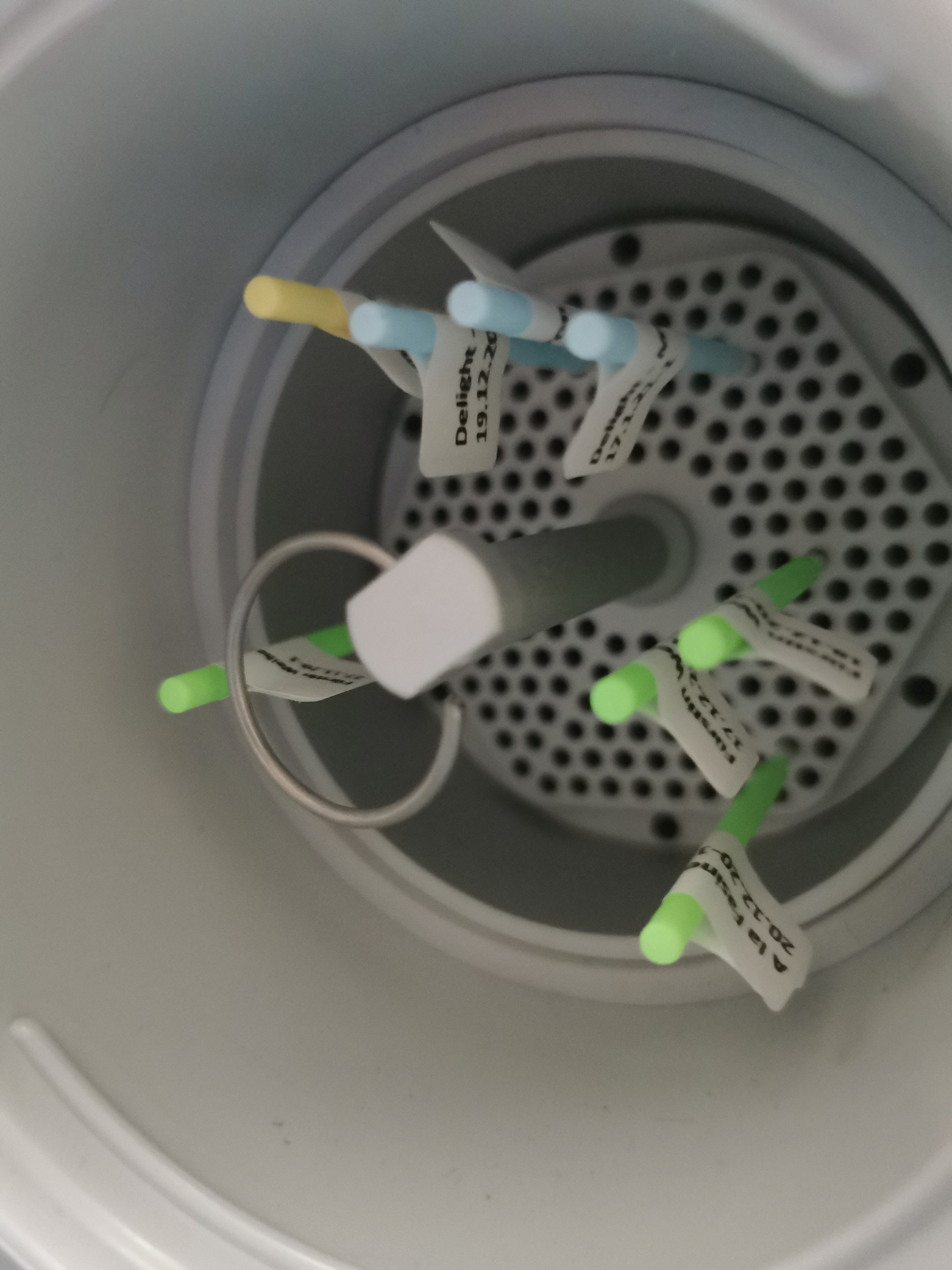
Pregnancy scanning
Eight to nine days after the transfer, we scan the recipient to confirm pregnancy. The pregnancy rate is approximately 70%. We repeat the pregnancy test at day 28-30 to confirm a heartbeat. The risk of early embryo loss is highest in the first 15-30 days, as with any other pregnancies.
There is a small risk (1-2%) that the ICSI pregnancy can divide and form monozygotic twins. It is therefore important to carefully determine that there is only one fetus with a heartbeart during the heartbeat examination.
We always recommend vaccinating your recipient against both influenza/tetanus approximately one month before term, and herpes virus in the months five, seven, and nine. Ask your own veterinarian for advice.




